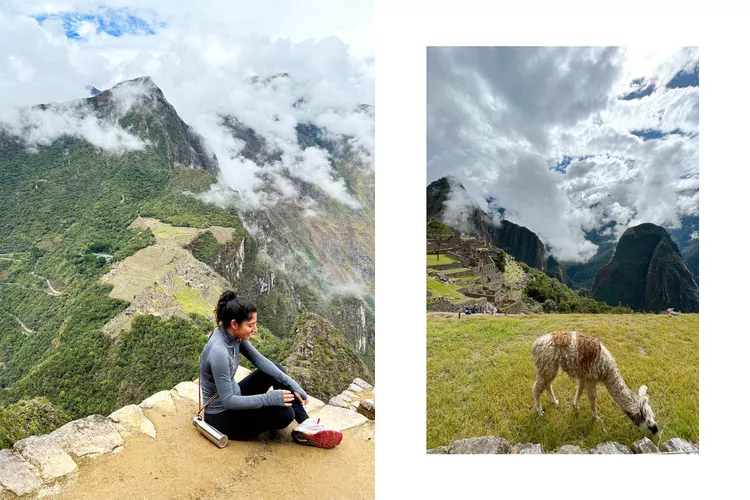Summary
Experience the Beauty of Peru
I found myself at an elevation of 11,800 feet, engaging in a delightful conversation with a baby alpaca. The view around me was breathtaking: the ancient Incan ruins of Pumamarka were nestled above the charming town of Ollantaytambo in Peru’s Sacred Valley. Majestic Andes peaks reached for a clear blue sky, while vibrant green terraces adorned the hillside.
My journey to Peru aimed to explore the eco-resort Las Qolqas, which opened in April 2021. Due to the impacts of the COVID-19 pandemic and political unrest affecting tourism, I became one of the first journalists from the U.S. to visit.
Discovering Ollantaytambo and its Rich History
Just a day before my hike to Pumamarka, I met with Porfirio “Porfy” Carbajal, the owner of Kuska Expeditions, who guided me through the town’s history. Despite the rain that day, we explored the area’s low stone structures, remnants of the Incan civilization, and discussed Porfy’s connection to the Quechuan community, where he grew up maintaining trails.
Pumamarka stands at nearly 12,000 feet, making it higher than Machu Picchu. This strategic start to our hike would ensure that Machu Picchu’s elevation seemed far more manageable the following day.
Preparing for the Hiking Adventure
Staying at Las Qolqas, I enjoyed the tranquility of the eco-resort while the rain poured outside. I prepared for the hike ahead by savoring a delicious dinner that included fresh trout ceviche caught from the Vilcanota River.
The next day commenced with a dash through the rain to catch the Inca Rail to Machu Picchu. Although the journey was damp and uncomfortable, exploring the ancient ruins and embarking on the hike up Wayna Picchu proved worth the effort. With a guide by my side, navigating the wet, steep terrain was manageable, allowing me to experience the grandeur of the Sacred Valley.
What to Know About Traveling to Peru Right Now
It may come as a surprise, but despite the political unrest that closed Machu Picchu earlier this year, now is an excellent time to travel to Peru. As travel expert Allie Almario explains, the situation has calmed significantly since March, and the country is ready to welcome visitors without any lingering COVID-19 protocols. Interestingly, crowds are currently only at 50 percent capacity, making it easier to obtain permits and tickets for local attractions.
How to Plan a Hiking Trip Abroad as a Solo Female Traveler
Advanced Preparation is Key
Before heading out on your hike, it’s crucial to share your itinerary with a trusted friend. Conduct thorough research on your chosen location, acquire a topographical map, pack light, and prepare for variable weather conditions. For solo trekkers in remote areas, consider using a satellite GPS device to stay connected.
Choosing the Right Accommodations
As a solo traveler, I preferred staying at small-scale eco-resorts like Las Qolqas. The property offers only 16 platform tents, a communal dining area, and opportunities for socializing with other guests. Engaging in local traditions, like the Pago de la Tierra ceremony, added to the enriching experience.
Working with Local Guides
Having a knowledgeable guide can enhance your hiking experience significantly. Prior to finalizing your accommodation, check if they can arrange guided excursions, as this makes scheduling more seamless. Collaborating with local tour providers, as I did with Kuska Expeditions, ensures that you can focus on enjoying the journey rather than stressing about logistics.




